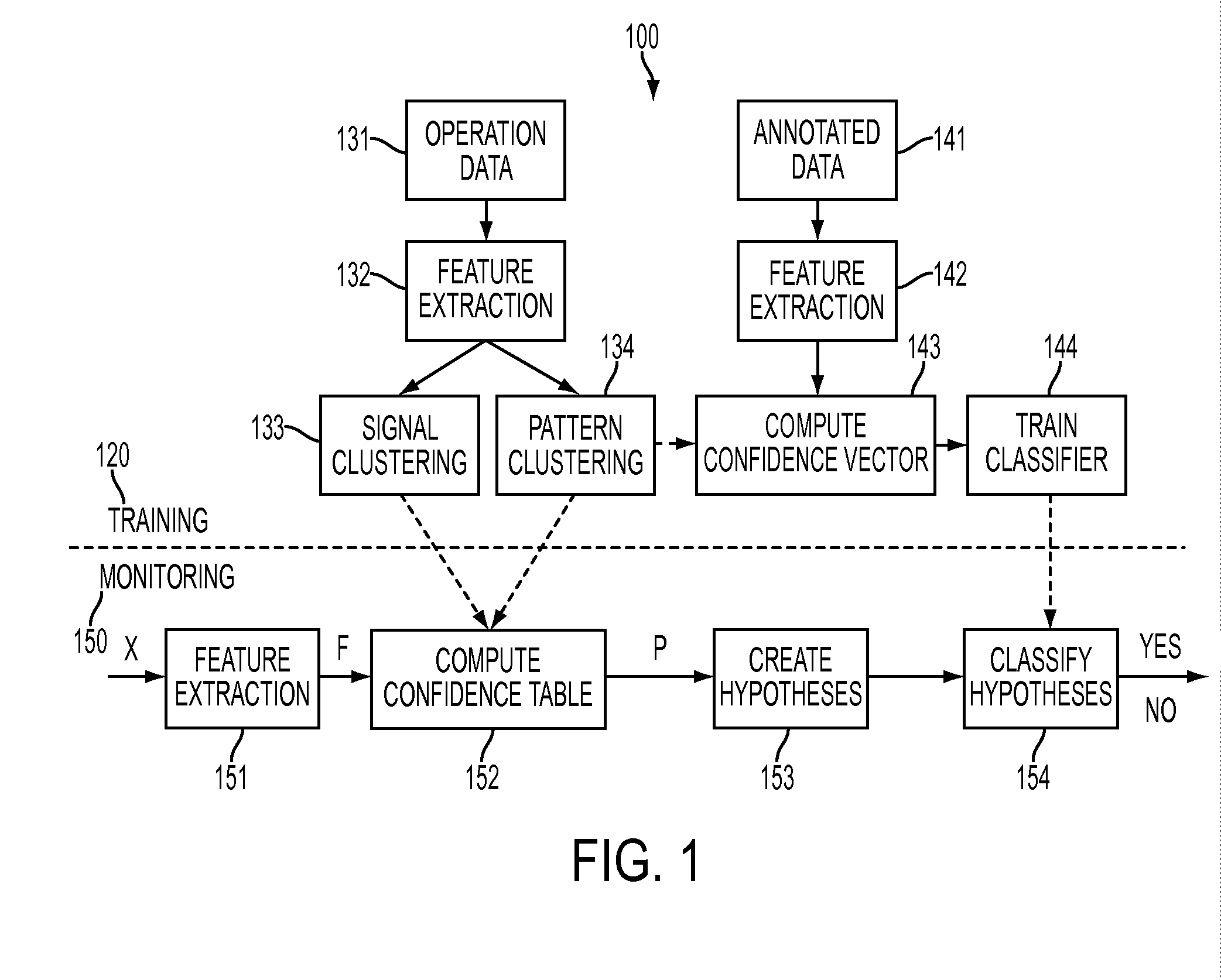Generalized pattern recognition for fault diagnosis in machine condition monitoring
a generalized pattern recognition and fault diagnosis technology, applied in the field of machine condition monitoring, can solve the problems of very deliberate and time-consuming process of designing accurate rules
- Summary
- Abstract
- Description
- Claims
- Application Information
AI Technical Summary
Benefits of technology
Problems solved by technology
Method used
Image
Examples
Embodiment Construction
[0011]The present disclosure focuses on an approach for using machine learning, and specifically, supervised pattern-recognition-based techniques. Machine learning models are data-driven: they are learned from training data automatically. That can be done very fast (for example, in minutes). If properly trained, machine learning models can describe complex fault conditions better than what is possible using rule bases.
[0012]Because machine learning techniques are data-driven, they require adequate training data to achieve the desired accuracy. The training data should represent both normal operation and failure modes. This requirement, however, is very difficult to meet. It is easy to obtain training data representing the normal condition because a machine should be operating normally during most of its lifespan. Obtaining training data representing a fault type, however, is rather challenging because certain types of faults may only occur rarely (even if we consider a collection of...
PUM
 Login to View More
Login to View More Abstract
Description
Claims
Application Information
 Login to View More
Login to View More - R&D
- Intellectual Property
- Life Sciences
- Materials
- Tech Scout
- Unparalleled Data Quality
- Higher Quality Content
- 60% Fewer Hallucinations
Browse by: Latest US Patents, China's latest patents, Technical Efficacy Thesaurus, Application Domain, Technology Topic, Popular Technical Reports.
© 2025 PatSnap. All rights reserved.Legal|Privacy policy|Modern Slavery Act Transparency Statement|Sitemap|About US| Contact US: help@patsnap.com



